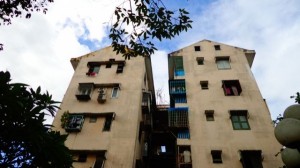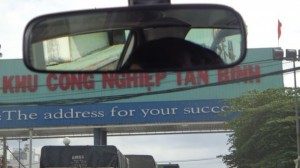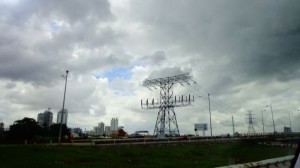An Exceptional Environmental Field Trip
Everyone, please take a moment to agree or disagree, but weren’t field trip days the best days of school? Field trips are meant to supplement a learned topic for a class, like visiting a museum or attending a performance etc., but really they are an excuse to get out of class and have some fun, while praying that there is no assignment or notes to take.
I still remember my favorite field trip. I was in 3rd grade and I visited Moon Marble Company in Kansas City. Reflecting on this, I have no inkling as to how this was educational AT ALL. I went in with all of my classmates and we all came out with tubes of marbles we picked ourselves. I am pretty sure each of us lost about half of them by the end of the day.
I do not tell you this only to fill space on the page. I tell you this because today I went on a fieldtrip with my Vietnam Environment class and it was one unlike any other. Fieldtrips I have taken, especially in my primary years, were very disconnected to my life as it was in that moment. Museums revealed pictures of the past and plays or concerts told stories that at times, seemed sensationalized for a desired emotional response. Today I visted the Nhieu Loc Thi Nghe Canal Upgrading Project and two industrial “parks” in Ho Chi Minh. This trip placed me in direct view of environmental problems and concerns for the Vietnamese people, particularly water and air quality.
In Vietnam, the subject of the environment is broad, with essentially more problems than successful solutions. For example, the Nhieu Loc Thi Nghe Canal Upgrading Project began in 1998 and is still in progress 14 years later. The purpose of the project is to improve the landscape surrounding the canal, improve the social condition of canal inhabitants, provide sewage treatment systems, and prevent flooding in the area. What was seen today is one appreciated achievement, and that is the increase of green space along the canal. The water in the canal is still drastically polluted, smells, and many slum migrants need to be relocated to a cleaner area with a sewage system. But, there is even an issue with this. Despite 5 story apartment building projects, many of the slum families choose to sell their new apartments and move back into slums along the canal. By doing this they are able to run small and consistent businesses on their shack front, instead of no business on the 5th floor of an apartment complex.



Another environmental problem I observed was at the Tan Binh Industrial Park, an area of the city with the worst concentration of air pollution. Beyond the pollution was the intermix of industrial buildings with domestic community homes and businesses. The households themselves were only separated by a line of trees which in no way could prevent the air pollution from reaching the lungs of the inhabitants. A possible solution? Relocate industries to the Hiep Phuoc Industrial Area on the south side of Ho Chi Minh, away from residences. But even this is a problem because that land had been developed over a natural wet land. I guess that was a give and take situation.


Today I was given the opportunity to be in a moment of history, rather than observe it through pictures or performance. It was hard for me to view the environmental conditions here because I am so used to what I can now call the luxury of proper waste water treatment in Chicago. Today I felt small, unable to “fix” anything. I want others to hold the same common “luxuries” I have. It was an exceptional field trip and I think it was an important one to share.
More environmental field trips and stories to come.
Chao,
Stephanie